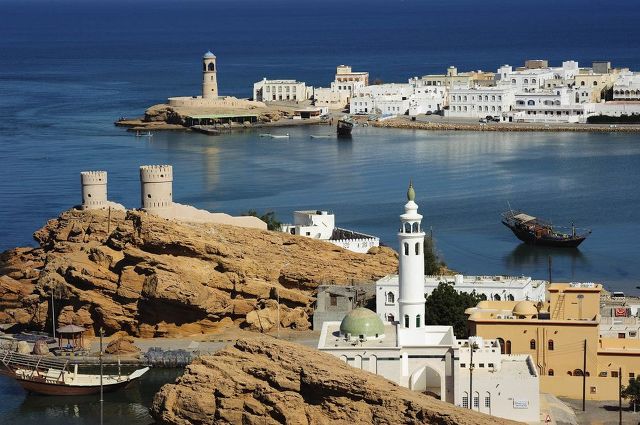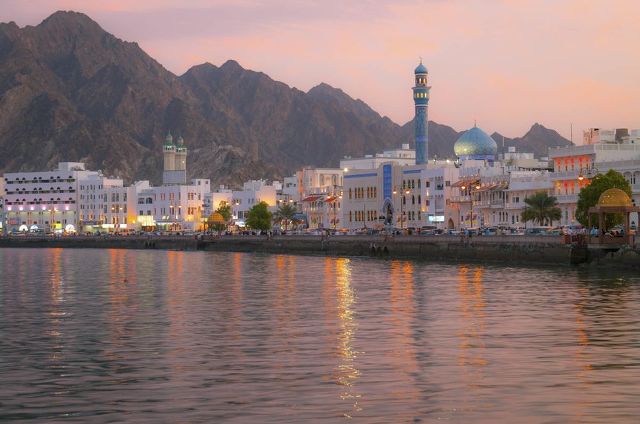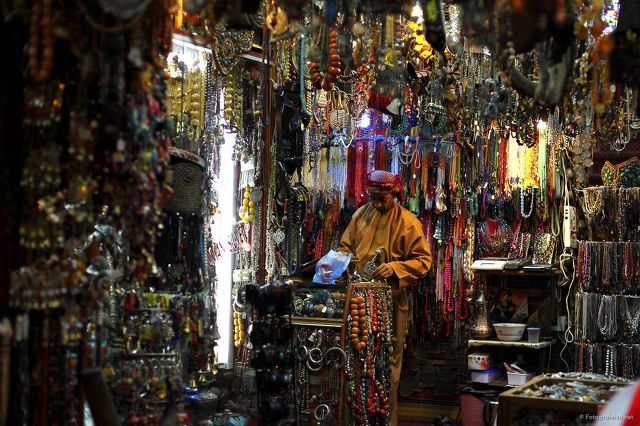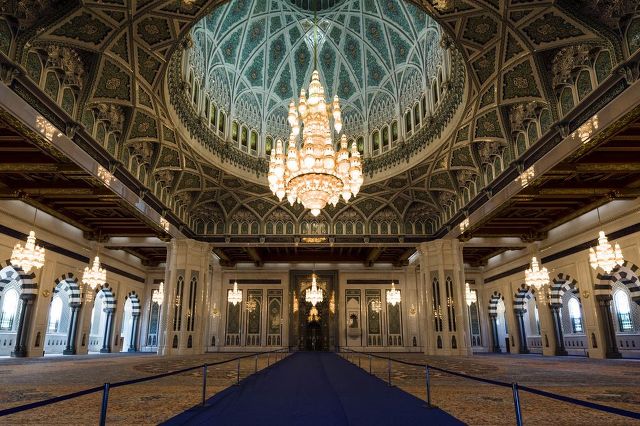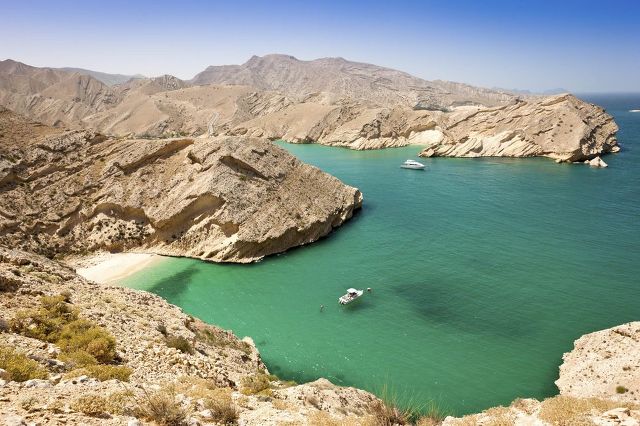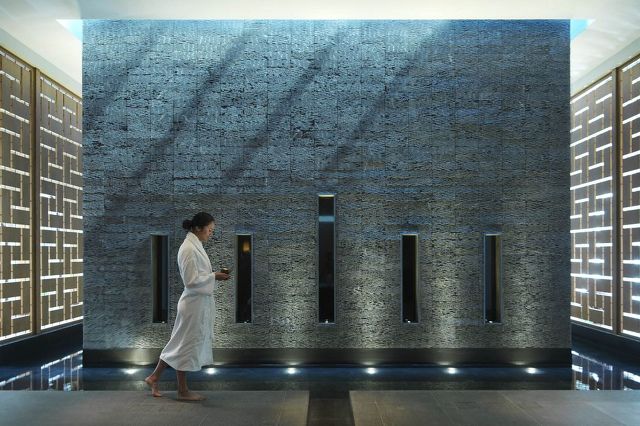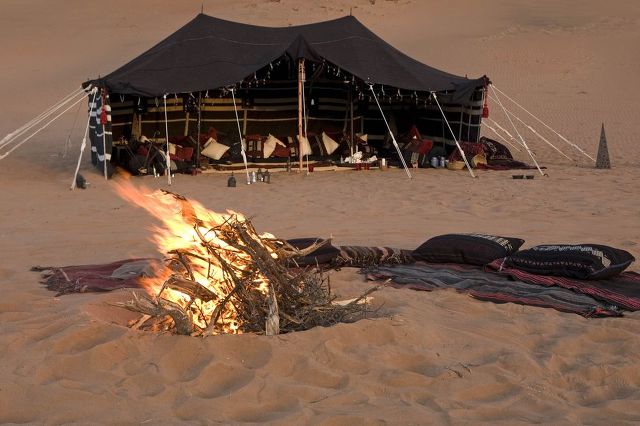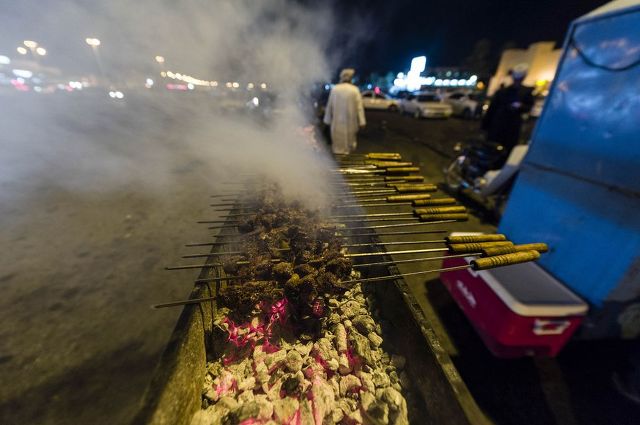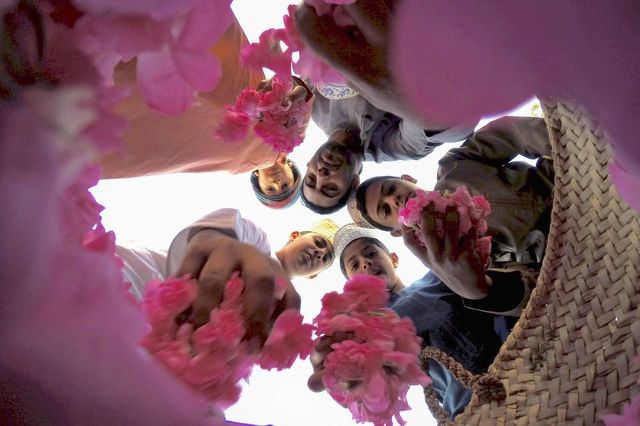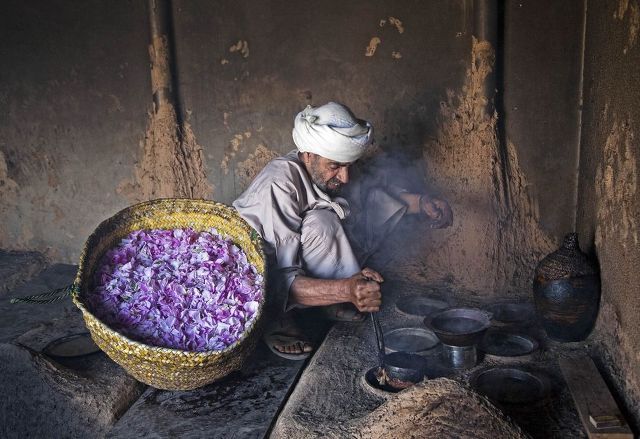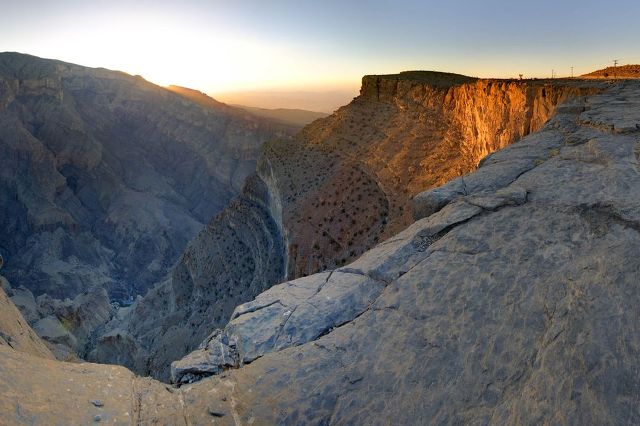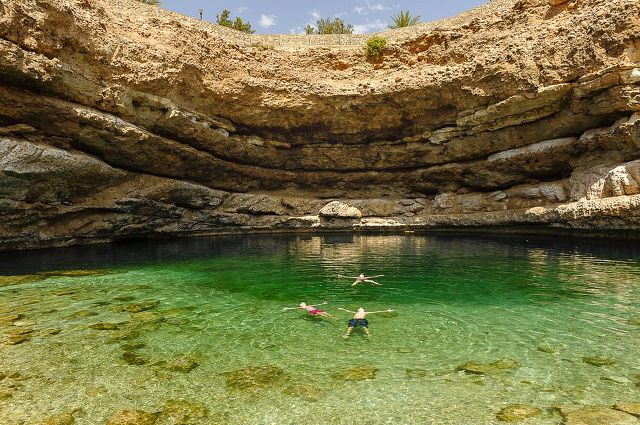
Why You Need to Go to Oman Now
Wedged among Saudi Arabia, the United Arab Emirates, and Yemen, Oman offers an authentic cultural experience in a stable spot in the Middle East. Time a visit from the end of March through mid-May to witness the rose harvest, a centuries-old tradition. Adrenaline junkies will thrill to the easy reach of desert, mountain, and sandy coastline, while the capital, Muscat, compels with historic, heady romance.
Oman’s seafaring past, and present, is much in evidence in the shipbuilding city of Sur, to the north of Muscat. Watch craftsmen work at the dhow shipyard and breathe in the aroma of cedar used in the construction of the vessels (known locally as safeena). There’s also a dhow museum, which houses the Fatih Al-Khair, a beautifully restored boat built in Sur 150 years ago. For views of Sur and the coast, climb the Portuguese-built Al Ayjah lighthouse (seen here with the blue roof).
The family-friendly Muscat Festival runs from January through February and is a big cultural happening on the city’s calendar. Celebrating arts, crafts, food, music, and culture (above, local children attend a Quran school), it’s an ideal time to visit the city.
Camel racing is big business; winning camels cost from $5 million to $10 million, with the finest specimens reaching even more stratospheric prices. Check the Oman Camel Racing Federation for details on races, where the beasts can reach speeds of up to 40 miles per hour. You may also spy robot jockeys—a blend of a thousand-year tradition and cutting-edge technology meant to replace the now illegal use of child riders.
Low-level and laid-back, the port city of Muscat sits on the Gulf of Oman, backed by the dramatic Hajar Mountains and edged with an attractive cornice that stretches along the harbor, through tranquil gardens, and past the souq to the bustling fish market.
Muscat’s mix of architecture speaks to its journey from more turbulent times to modern day, from the 16th century forts Al Jalali and Mirani above Muscat Harbor to the sultan’s 1972 waterfront palace in blue and gold. More recent examples of contemporary Islamic architecture are the Sultan Qaboos Grand Mosque, completed in 2001, and the Royal Opera House Muscat, which opened in 2011.
Better to get lost in Muttrah Souq than stick to the main drag, where the more expensive stalls are located. Instead, do your haggling in the warren of alleyways. It’s a treasure trove of all things Arabian, with a bewitching array of spices, perfumes, textiles, and jewelry, including Omani silver and a standalone gold market. Muttrah was originally a fishing village but became part of Muscat as the city grew.
There’s no shortage of desert in Oman, but not all sands are created equal. Bawshar Sands, near Muscat’s Sultan Qaboos Grand Mosque, is a good location for dune-bashing in SUVs and on bikes, as is Ramlat Tawq. Beautiful A’Sharqiyah Sands, aka Wahiba Sands, the original homeland of the Bedouins, is rich in oases and ideal for camping and activities such as desert surfing.
As its name suggests, the Empty Quarter has little in the way of oasis greenery. At 250,000 square miles, the world’s largest continuous sand desert is still unexplored in parts, so it’s best approached alongside an experienced guide.
Sometimes second-best is good enough. One of Muscat’s main attractions is the stunning Sultan Qaboos Grand Mosque, which has the world’s second-largest carpet (45,208 square feet) and the second-largest chandelier (46 feet high and festooned with 600,000 Swarovski crystals). Named for Oman’s 76-year-old Sultan Qaboos bin Said al Said, this soaring creation of white marble, colorful mosaics, and carved wood was finished in 2001.
The four minarets and 164-foot-high gold dome are easily located in Muscat’s low-slung skyline. Non-Muslims can visit from 8 a.m. to 11 a.m. daily, except on Fridays.
With more than 1,056 miles of coastline, Oman’s beaches are as varied as they are beautiful. Khalouf Beach, south of Muscat, is wide and secluded, but for flamingos and eagles and fishing dhows bobbing in the Arabian Sea.
For green turtle sightings, the beach at Ras al-Jinz on Oman’s most easterly point is your best option (hatching takes place in September through November). In southern Oman, dramatic cliffs provide a stunning backdrop to Mughsayl’s powder white sands.
Located on Al Jabal (Green Mountain) at 6,562 feet above sea level and perched above a dramatic gorge, most of the 115 rooms at the Anantara Al Jabal Al Akhdar resort have breathtaking canyon views. The design is contemporary with traditional elements, such as decorative latticework and arabesque lanterns, while the exteriors reflect the tawny shades of the surrounding landscape.
The location provides plenty of high-octane activities, from rock climbing to abseiling to mountain biking, as well as more chilled pursuits, including stargazing and visits to mountain villages where rose water is distilled. Local roses are also infused into the Anantara Spa (above) and its hammam treatments.
Hud Hud is a luxury mobile camp that moves among all of Oman’s natural splendor: from the Hajar Mountains, Wahiba Sands, beaches of Khalouf, Bar al Hikman, and Daymaniyat Islands in the north to the Empty Quarter and secluded beach near Mirbat in the south.
The low-impact, candle- and solar-lit camps include twin and double sleeping tents with private bathrooms, traditional furnishings, comfy mattresses, and crisp cotton linen, as well as large majilis with comfortable cushions and rugs on which you can mingle with your fellow campers. Food is served alfresco around a campfire.
Follow the sight of rising smoke and a delicious smell, and chances are you’ve discovered mishkak. These skewers of marinated meat and seafood are grilled over charcoal and served with spicy tamarind sauce in places like Muttrah Souq’s night market.
Omani cuisine benefits from the country’s location along centuries-old spice routes, so along with the typical Middle Eastern ingredients such as dried limes, rose water, and saffron, dishes also include the less expected, like coconut, nutmeg, and wheat berries.
The Al Jabal Al Akhdar landscape turns fuchsia during the rose harvest from the end of March through mid-May. Blossoms are picked early in the day and taken to mountain villages including Al-Aqr, Wadi Bani Habib, and Al-Fiqaine to be distilled into rose water in a process that’s been around for centuries.
The rose petals are simmered in water for hours in a mud oven known as an Al-duhjan, with the resulting rose water collected in copper attachments. It’s then stored in large pots called Al-karas for about a month. Omani rose water is used in perfume and beauty products, as well as for cooking and medicinal and ceremonial purposes.
Jebel Shams (“mountain of the sun”) is Oman’s highest mountain. But rather than the 9,872-foot summit itself, its big attraction is the view of the dramatic topography of Wadi Ghul, Oman’s equivalent of the Grand Canyon, which is the only canyon in the world deeper than this one. The mountain is part of the dramatic Hajar range in the north, which parallels the arc of the Gulf of Oman coastline.
The ruins of the ancient city of Qalhat include the tomb of Bibi Maryam, located between Muscat and Sur. By the 13th century it was Oman’s main commercial port, and the country’s first capital before the arrival of Islam. The vibrant, fortified city attracted many foreign travelers, including Marco Polo, who described it as prosperous. It’s believed to have been destroyed intentionally in a scorched-earth affair after it came under the influence of the Portuguese. The shrine leads to a crypt and underground corridors.
Hawiyat Najm
The Bimmah Sinkhole, known as Hawiyat Najm, located between Muscat and Sur, is the perfect place for a swim in freshwater. More than 130 feet wide and 65 feet deep, it was caused by erosion; a more romantic legend explains that it was caused by a falling star (Hawiyat Najm translates as “falling star”).
Just south from here is Wadi Shab, one of the country’s most beautiful freshwater swimming spots. Trek along a mountain ravine lined with date and banana palms to the aquamarine waters surrounded by sandstone cliffs.
.
(인용: Nic McCormack, 부름버그)
